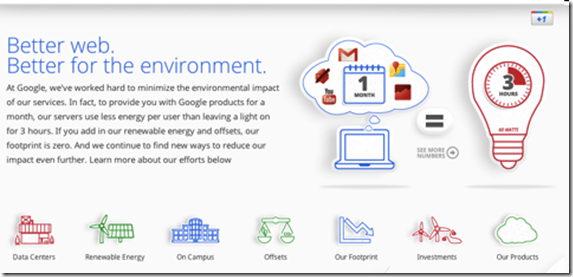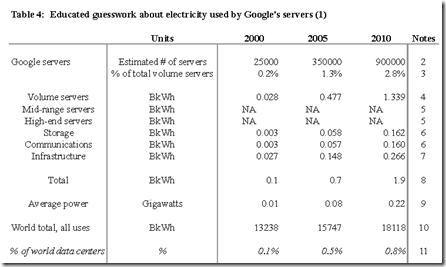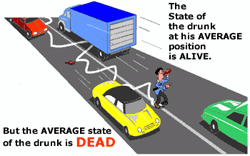One of things I figured out long time ago as an Industrial Engineer is efficiency is good to some, but not all. If you talk about being Green you get almost all the people saying being green is good with few fighting the green initiative. And what is behind a big of being green? A big part is being efficient.
Chris Crosby does a good job of giving an insiders view of the secret of being green in the data center business.
“We all talk about being green like it’s our ticket to corporate sainthood, but really we just keep improving the energy efficiency of our data center operations because it helps us make more money”.
...
You really thought that all this incessant talk about being “green” was about saving the planet? How quaint. Well, why don’t you come sit up front here and let me explain a few things.
Got your attention? Chris explains more.
Marketing, and its very close friend Public Relations, are all about making people want things because they think they are important. So about five years ago, some very bad people began to say that data centers used too much energy and that wasn’t good for the environment. While a whole bunch of folks in the data center business panicked, some marketing people got together and said, “This is awesome. We know that using too much power hurts our profit margins, and people that think that’s bad anyway, so let’s jump on the bandwagon and call our energy efficiency efforts “green initiatives” and then everyone will be happy”. This is what’s known as a win/win proposition. Naturally, the whole industry cheered.
Seizing on this new vision, data center companies began to improve their energy efficiency. They even came up with a new standard to help measure the improvements in performance called PUE so customers could prove it to themselves. This new standard has become so popular that now data center providers and operators use it as part of their marketing and PR efforts. Really big operators love this concept. They do all kinds of wild things like spending large sums of money on horribly inefficient technologies like solar panels so they can turn around and talk about their commitment to being green. Now of course we all know that this is just to keep large groups of generally unshaven, Birkenstock wearing extremists from causing a big fuss and driving down their stock price, so we all play along and show our support by saying things like, “Man, that’s what I call a real commitment to green”. See the double meaning there? A lot of people don’t, but for obvious reasons we don’t bother to correct them.








